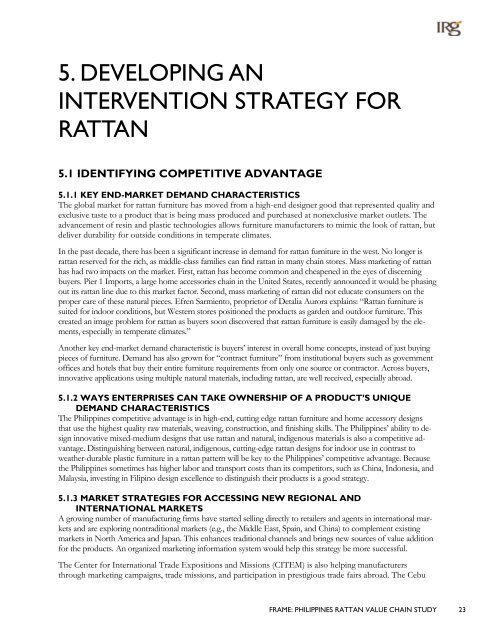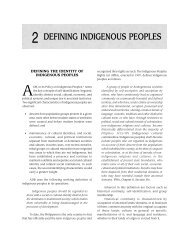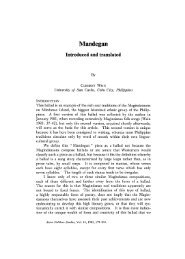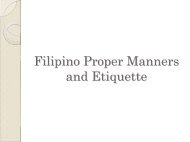PHILIPPINES RATTAN VALUE CHAIN STUDY - Aboutphilippines
PHILIPPINES RATTAN VALUE CHAIN STUDY - Aboutphilippines
PHILIPPINES RATTAN VALUE CHAIN STUDY - Aboutphilippines
You also want an ePaper? Increase the reach of your titles
YUMPU automatically turns print PDFs into web optimized ePapers that Google loves.
5. DEVELOPING ANINTERVENTION STRATEGY FOR<strong>RATTAN</strong>5.1 IDENTIFYING COMPETITIVE ADVANTAGE5.1.1 KEY END-MARKET DEMAND CHARACTERISTICSThe global market for rattan furniture has moved from a high-end designer good that represented quality andexclusive taste to a product that is being mass produced and purchased at nonexclusive market outlets. Theadvancement of resin and plastic technologies allows furniture manufacturers to mimic the look of rattan, butdeliver durability for outside conditions in temperate climates.In the past decade, there has been a significant increase in demand for rattan furniture in the west. No longer israttan reserved for the rich, as middle-class families can find rattan in many chain stores. Mass marketing of rattanhas had two impacts on the market. First, rattan has become common and cheapened in the eyes of discerningbuyers. Pier 1 Imports, a large home accessories chain in the United States, recently announced it would be phasingout its rattan line due to this market factor. Second, mass marketing of rattan did not educate consumers on theproper care of these natural pieces. Efren Sarmiento, proprietor of Detalia Aurora explains: “Rattan furniture issuited for indoor conditions, but Western stores positioned the products as garden and outdoor furniture. Thiscreated an image problem for rattan as buyers soon discovered that rattan furniture is easily damaged by the elements,especially in temperate climates.”Another key end-market demand characteristic is buyers’ interest in overall home concepts, instead of just buyingpieces of furniture. Demand has also grown for “contract furniture” from institutional buyers such as governmentoffices and hotels that buy their entire furniture requirements from only one source or contractor. Across buyers,innovative applications using multiple natural materials, including rattan, are well received, especially abroad.5.1.2 WAYS ENTERPRISES CAN TAKE OWNERSHIP OF A PRODUCT’S UNIQUEDEMAND CHARACTERISTICSThe Philippines competitive advantage is in high-end, cutting edge rattan furniture and home accessory designsthat use the highest quality raw materials, weaving, construction, and finishing skills. The Philippines’ ability to designinnovative mixed-medium designs that use rattan and natural, indigenous materials is also a competitive advantage.Distinguishing between natural, indigenous, cutting-edge rattan designs for indoor use in contrast toweather-durable plastic furniture in a rattan pattern will be key to the Philippines’ competitive advantage. Becausethe Philippines sometimes has higher labor and transport costs than its competitors, such as China, Indonesia, andMalaysia, investing in Filipino design excellence to distinguish their products is a good strategy.5.1.3 MARKET STRATEGIES FOR ACCESSING NEW REGIONAL ANDINTERNATIONAL MARKETSA growing number of manufacturing firms have started selling directly to retailers and agents in international marketsand are exploring nontraditional markets (e.g., the Middle East, Spain, and China) to complement existingmarkets in North America and Japan. This enhances traditional channels and brings new sources of value additionfor the products. An organized marketing information system would help this strategy be more successful.The Center for International Trade Expositions and Missions (CITEM) is also helping manufacturersthrough marketing campaigns, trade missions, and participation in prestigious trade fairs abroad. The CebuFRAME: <strong>PHILIPPINES</strong> <strong>RATTAN</strong> <strong>VALUE</strong> <strong>CHAIN</strong> <strong>STUDY</strong> 23
















